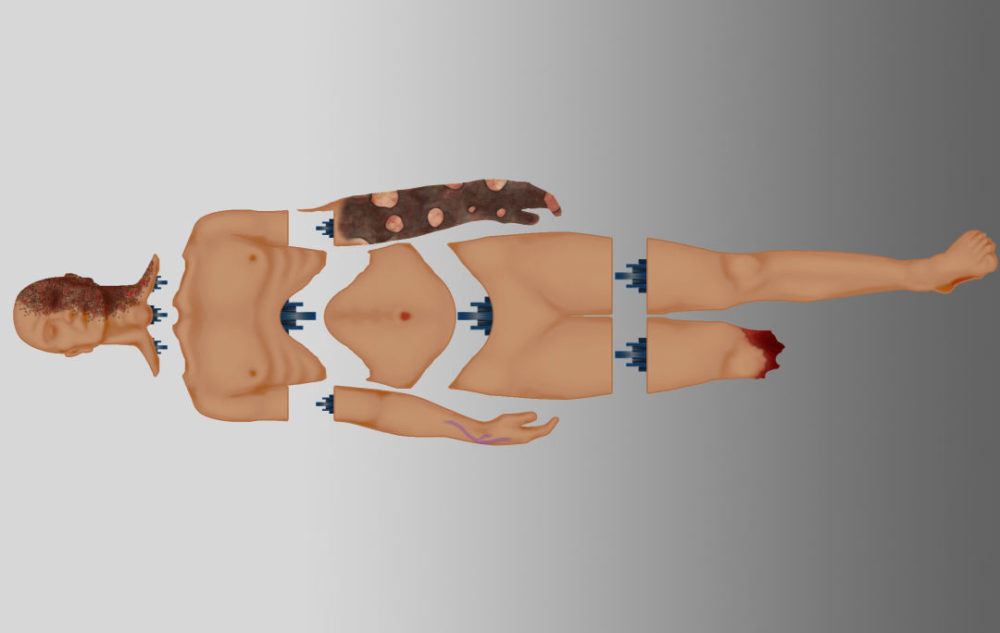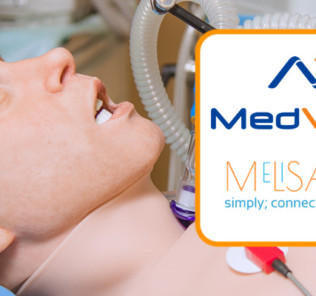U.S. Government Funded ‘Advanced Modular Manikin’ is Now in Phase II
In IT there are only a few computer operating systems in use by the general public such as Windows, iOS, Linux and Android as examples. Such a limited playing field helps the industry by simplifying the hardware and software systems needed to effectively develop and utilize computer technologies. As the industry of healthcare simulation is still so new, hardware technologies are private IP of individual brands which do not adhere to any set standards. The U.S. government, and more specifically, the Department of Defense, funded the Advanced Modular Manikin (AMM) project awarded to The University of Minnesota and the Center for Research in Education and Simulation Technologies (CREST) at UMN and UW to explore the possibility of creating one universal standard for hardware so that manufacturer’s and developers could create unique equipment and tools which could be implemented on any manikin. Basically, imagine an Ultrasound Arm from brand on one side of your AMM, and an IV arm on the other side from yet another company — that’s the world AMM is considering how to create! Today we take a look at the project after our initial coverage about AMM, which is now in Phase II.
About the AMM Project
The Advanced Modular Manikin (AMM) project is a collaborative effort between the Department of Defense, UW CREST and industry producers. The goal is to create a standardized blueprint for developing segmented body parts that can universally join together, forming one multi-purpose manikin to fit the needs of any desired scenario. The University of Minnesota and the Center for Research in Education and Simulation Technologies (CREST) were the recipients of DOD Award # W81XWH-14-C-0101.
Sponsored Content:
The deliverables consist of a modular, distributed, interoperable architecture patient simulation with open standards for all the relevant data models, communication protocols, physical connectors, a reference patient and reference hardware for core resources that will be published in draft form for comments, then finalized and published. The software that is part of the core system will be made available under an open source license.
Defined body shapes and sizes with standardized connection ports allow parts to fit seamlessly with other modules. Modules are self-contained part-task trainers, swappable and can feature disposable organs. Data moves freely across borders and connects to external peripherals, like monitors, speakers, and scent machines. Virtual patients act as individual modules and sync with physical counterparts. Picture Modules can exist as stand-alone simulators, set with a standard plug. Internal devices communicate with other hardware via Wifi, Bluetooth and RF ID. When connected, data flows through a closed loop communication. Designed in a standard form, with connections and data communications for the medical community and simulation field. The project is now in Phase II, covering standards development such as hardware shared below (more available on the website).
Hardware Considerations of AMM
- Development kits for compute modules and real-time boards
- The CREST team is developing a set of reference designs for the real-time compute modules and the analog boards that connect to any needed sensors and actuators within the plug in educational modules, such as an IV Arm or Intubation Head. We are developing these to demonstrate the functionality of the AMM Platform. The designs will be documented and published as part of the deliverables for this project. CREST will attempt to secure a source that can deliver the reference hardware kit at a reasonable cost for development teams to facilitate their design process.
- The expectation is that as modules are readied for commercialization, the industry participants would use the reference design as an example but would develop their own hardware based on the published Open Standards.
- Relevant architecture documents and design guides
- The CREST team will publish a complete set of documentation for the AMM Architecture, including the design guidelines, sample documentation package for the module design process.
- Standard connector designs for head, arms and legs
- The CREST team is developing the standard connectors for head, upper and lower extremities to connect to the torso, providing the physical connection as well as power, data, fluid and air supplies as part of the core supplies to the manikin. CREST will deliver a complete set of engineering drawings, material selection Bill of Materials for commercial components that are used and a guide to incorporate these connectors into plug-in module designs.
- CREST will attempt to secure a source that can deliver the reference connectors at a reasonable cost for development teams to facilitate their design process.
- The expectation is that as modules are readied for commercialization, the industry participants would use the reference design as an example but could develop their own hardware based on the published Open Standards with their own supplier network.
- Reference design documentation for power, fluid and air supply for development platform
- The CREST team is developing a design for central operating resources for the AMM platform to include power and power management, fluid and pressurized air and their management across all plug-in modules. The control hardware will be identical to the one used for the plug-in modules, and the required software will be available as part of the open standards package. The performance specifications will also be published as part of the final design package. This capability can be external or internal to the manikin, and if internal can be located in any part of the manikin as required by the training needs and space/weight trade-offs.
Sponsored Content:
What AMM is Not
- A Manikin: Although the name implies a manikin, it is much broader. It is a platform that brings together many modalities (Physical, VR, AR) with a common objective: Ability to render the state of the patient so it can provide cues required by providers to make decisions. Ability to sense actions taken by providers such that it can influence the state of the patient as required. Ability to capture decisions and actions such that they can be used for performance evaluation.
- A Commercial Produc:t The result of the AMM Phase II project is not a ready to ship commercial product or a package of information from which one can build a commercial product. Rather, it is a set of standards and reference designs upon which any interested part can design and commercialize a product. The AMM team is putting together a prototype system to demonstrate the functionality of the standards and reference designs based on work being done under other projects and some industry players.
- A Complete Design That Can Be Sourced: The final deliverables of the AMM project is not a complete set of designs and specifications from which one could manufacture a complete system. Rather, it is standards and reference designs that represent the core building blocks upon which others can create compatible segments and modules.
- A Final Set of Standards: The standards that are being published, although necessary and sufficient considerations, by design are intended to be extensible by following a set of guidelines to allow for future developments.
- A One Company Solution: Although a company can choose to build a complete system, the standard interfaces that have to be used to be deemed AMM compatible ensures that at the segment level, product offerings remain interoperable. Within segments, companies may choose to be proprietary.
Learn more about the AMM Project on the Official Website!
Lance Baily, BA, EMT-B, is the Founder & CEO of HealthySimulation.com, which he started while serving as the Director of the Nevada System of Higher Education’s Clinical Simulation Center of Las Vegas back in 2010. Lance is also the Founder and acting Advisor to the Board of SimGHOSTS.org, the world’s only non-profit organization dedicated to supporting professionals operating healthcare simulation technologies. His co-edited Book: “Comprehensive Healthcare Simulation: Operations, Technology, and Innovative Practice” is cited as a key source for professional certification in the industry. Lance’s background also includes serving as a Simulation Technology Specialist for the LA Community College District, EMS fire fighting, Hollywood movie production, rescue diving, and global travel. He and his wife Abigail Baily, PhD live in Las Vegas, Nevada with their two amazing daughters.
Sponsored Content:

















